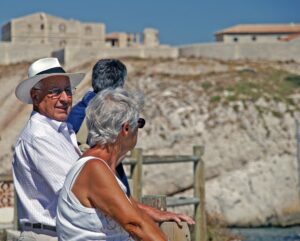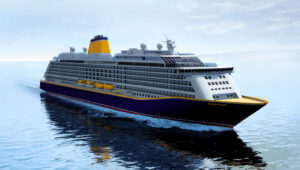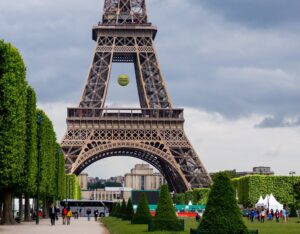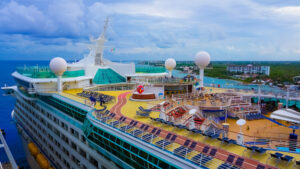France
From stunning cities and charming castles to idyllic countryside’s and fine restaurants, France flatters many a visitor and leaves an indelible mark.
One of the biggest (and oldest) countries in Western Europe, France is one destination you must visit at least once in your lifetime.
World-class architecture and art exemplify the great heritage of the French people.
While these are the main reasons people visit France, the country is also popular for its charming cities, fashion houses, fine cuisine, and esteemed wines.
Metropolitan France (or France in Europe) extends from the Mediterranean Sea in the south to the English Channel and the North Sea.
France’s scenery is as varied as its climate. It has a terrain unique to continental Europe, featuring low-lying plains, remains of old mountains, plateaus, and massifs.
Each region in the country is unique. From the Loire Valley and Brittany to Burgundy and the Alps, there’s always something new to experience.
Whether you have a romantic trip planned or are taking a much-needed break from the city with family or friends, you won’t run out of things to do in France.
You can stroll around the capital city, Paris, and bask in its iconic sites, sunbathe along the French Riviera, or taste some of the world’s best wines in Bordeaux.
A visit to the Louvre, the classical art museum housing renowned pieces of fine art, is an ideal excursion for any history enthusiast.
And if you want to explore France’s great outdoors, go hiking, climbing, cycling, or kayaking.
France is in western Europe. It shares land borders with Spain and Andorra to the south and southwest, Belgium and Luxembourg to the northeast, Germany and Switzerland to the east, and Italy and Monaco to the southeast.
It’s also bounded by the Mediterranean Sea in the southeast, the Bay of Biscay in the west, the English Channel (La Manche) in the northwest, the North Sea to the north, and the Atlantic Ocean to the west.
France has territories in the Americas, the Indian, Pacific, and Atlantic Oceans. This includes Saint Pierre and Miquelon in the North Atlantic, French Guiana in South America, and the French West Indies.
Through French Guiana, it borders Suriname and Brazil in the Americas, and the Netherlands via the French part of Saint Martin.
Metropolitan France, the part of the country in Europe, is twice the size of the UK. It includes the coastal island of Corsica in the Mediterranean.
Monaco is an independent enclave on the southern coast of France.
France has a diverse terrain comprising the Massif Central in the south central, mountain ranges of the Alps in the southeast, the Pyrenees in the southwest, and coastal plains in the north and west.
It also has over 2000 miles of beaches and seashores.
The landscape is dominated by a group of ancient mountains, which, when viewed from above, form a V-shape.
Mount Neige is the greatest peak in France at 1,718 m (5,636 ft). Another notable peak is Mont Blanc at 4,810.45 m (15,782 ft) above sea level, which is in the French Alps along the country’s shared border with Italy.
An extensive river system runs through France. The most notable and major rivers are the Seine in the north, the Loire in the southern Massif Central, the Garonne in the southwest and the Rhône in the southeast. The Seine River flows north-westerly past the Île Saint-Louis in Paris.
Excluding northeast France, where Paris is located, geographic features and natural boundaries dominate most of the land borders. This includes the Rhine River in the east and the Pyrenees, the Als, and the Jura in the south and southeast.
The narrow Strait of Dover (Pas de Calais) lies between northern France and south-eastern England.



Considering France’s location, size, and geography, the country has varying climates.
Most of the country lies in a temperate region, while the southern fringes are in a subtropical area.
The surrounding bodies of water moderate the weather in France, namely the Mediterranean Sea on the south and the North Atlantic Drift on the west.
The three major climatic zones present in the country are Mediterranean, oceanic, and continental. This makes France slightly warmer than the UK and cooler than Spain.
The cities of Marseille and Montpellier in southern France along the Gulf of Lion have a Mediterranean climate. Winters are mild, precipitation is heavy, and summers are hot and dry.
In north-western France, along the Bay of Biscay and slightly inland, an oceanic climate prevails. This region is where you’ll find Paris, Bordeaux, Lille, and Bourges. There is moderate rainfall, low annual temperature variations, and extreme humidity.
In Paris, the average yearly temperature is 11 °C (53 °F).
A continental climate is present in the mountainous regions of Southern France and the northern half of the country. Winters are extremely cold and snowy, while summers are pleasantly warm and dry.
In Nice, the average annual temperature is 15 °C (59 °F), declining towards the north to 10 °C (50 °F) on the northern border in Lille.
Annual precipitation exceeds 1,270 mm (50 inches) at higher elevations in the west and northwest, the mountain ranges and in the Massif Central.
France has all four seasons, each lasting approximately three months.
Spring is the season of romance in France, and when flower festivals are popular. Running from March to June, the weather is typically warm and you can expect many days of sunshine.
If you plan to visit France in Spring go to Arcachon Bay to enjoy fresh oysters or the Marais Poitevin (or Green Venice) for unmatched nature immersion.
Summer is from June to August, and high temperatures mark the season. The average temperature during summer ranges between 16.1 °C (61 °F) and 23.9 °C (75 °F).
This is the peak season for tourism in France, so be prepared for crowds. Despite this, it’s the best time to catch festivals like the Sully and Le Loiret Music Festival in Loire Valley. It’s also the ideal time to visit Nice and Avignon for beach activities and sightseeing.
Autumn in France is pleasantly warm and rainy. The season runs from September to November.
It’s ideal for enjoying the wine harvest festivals all around the country. Also, you won’t regret a visit to Beaune and the renowned wine region, Bordeaux.
Winter in France starts in December and ends in February, with the average temperature ranging from 1.7 °C (35.1 °F) to 9.4 °C (48.9 °F).
In eastern France, it can get chilly and foggy. But near the Mediterranean Sea, temperatures are much milder.
Despite the frigged and rainy weather of France winters, it’s the best time to attend the Festival of Lights in Lyon and the Paris Carnival in Paris.
You might also enjoy exploring the open-air market in Cannes or visiting the Notre-Dame de Fourvière in Lyon.



If there’s one thing about French cuisine almost everyone knows, it’s one of the finest in the world. From beef bourguignon to crème brûlée, the French have a way with food that excites any pallet.
Traditional recipes vary from region to region, with each having its own specialty. These include bouillabaisse (seafood soup) from Marseille, choucroute (sauerkraut with sausage and other salted meats) from Alsace, and magret de canard (slices of duck breast) from Bordeaux.
Some other French hors d’œuvres and main dishes include foie gras (duck or goose liver), pot au feu (beef stew), and lobster bisque.
French desserts are just as elegant as other popular dishes, comprising mousse au chocolat, macarons, and mille-feuille.
The French produce a wide range of cheeses (over 300 varieties!), including Brie in Île-de-France and Reblochon in Savoy.
Apart from the country being renowned for cheese, France is also popular for being one of the world’s best wine producers.
They range from light, fruity sparkling varieties, and Mediterranean reds to less renowned blends like ‘yellow wine’ (vin jaune).
The regions of Burgundy, Bordeaux, and the Rhône valley are home to some of the world’s great vineyards.
Autumn is the best season to go wine tasting in France and take part in wine harvesting traditions.



What to wear in France depends on the season you’re going and the activities you’ll be doing.
In general, lightweight clothes are ideal, meaning leave those clunky jeans at home. It’s also best to have neutral-coloured clothes.
Although Paris has a reputation for stylish and fashionable wear, you can wear whatever is comfortable for you.
Go for casual garments, but remember to add a touch of class so you don’t appear underdressed or disordered. Avoid baseball caps, clunky sneakers or trainers, shorts, flip-flops, and sweatpants when in the cities.
For women, dresses and skirts are best, while for men, dark jeans, button-down shirts, and trousers.
If you’re packing for the seasons, summer dictates light, breathable garments, and a light jacket for chilly nights. It’s best to be prepared for warm and cold weather in Autumn, so pack leather clothing, sweaters, and long sleeve shirts.
As for winter, you should bring along a thick coat or jacket, warm trousers, scarves, and gloves. And since spring has unpredictable weather, light sweaters, tailored pants or dark jeans, and long-sleeve tops are ideal.
Packing light for a trip to France is the right way to go. The last thing you want is to be lugging around a heavy suitcase (or three) of clothes you won’t wear.
You should create a capsule suitcase with garments you can mix and match. This way you will have a light suitcase and several options for outfits.
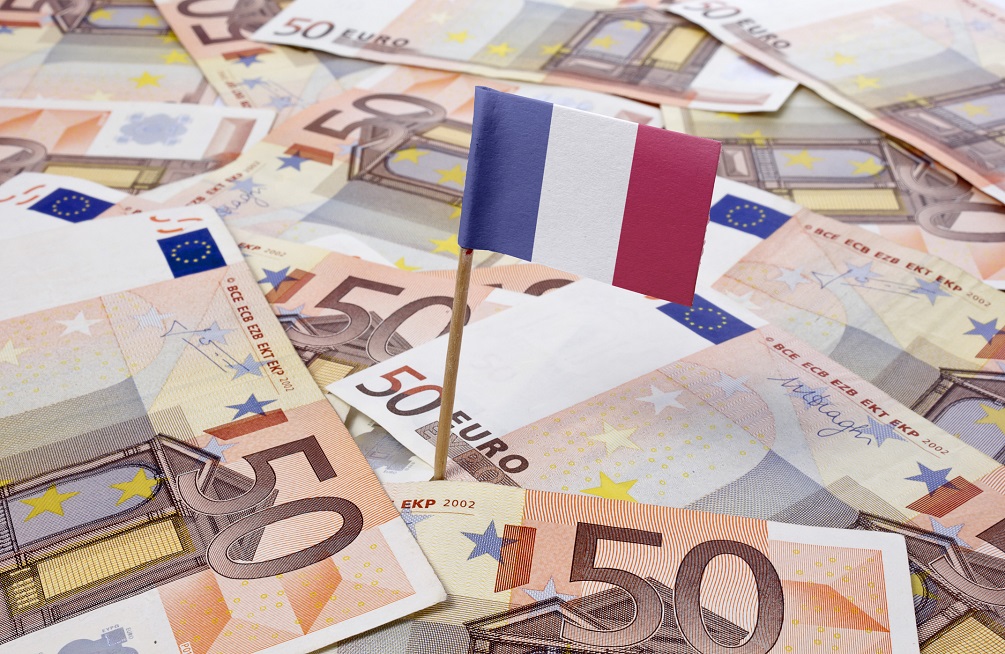


The euro (EUR) is France’s national currency, one unit of which is divided into 100 cents.
Banknotes in circulation are available in denominations of €5, €10, €20, €50, €100, €200, and €500. However, the €200 and €500 notes are rare and are not typically accepted for small purchases.
The euro coins in circulation are 1 and 2 euros, and 1, 2, 5, 10, 20, and 50 cents.
Most of the banks in France aren’t have an option to exchange money for non-account holders.
You can swap your foreign currency for euros at any exchange bureau. But be wary about the rate you’re offered and any commissions you’ll be charged.
Most hotels and stores in France accept credit and debit cards. The most widely accepted are Visa and MasterCard. But you may be able to use other types of cards, including Cirrus and Maestro.
You will find ATMs almost everywhere in France outside all banks, in shopping malls and centres and at train stations and airports.
You may be charged a withdrawal fee when using one of the ATMs in France. Therefore, make sure you know how much this fee will be so you can plan accordingly. If you have more than one card, find out which one has the lowest withdrawal fee and offers the best exchange rate, then use that one for your trip.
Traveller’s cheques, although rarely accepted in some countries, can be cashed in France at any bank or urban post office. You can also use them in some hotels, but outside major tourist areas, they will not be accepted.
If you plan to come with traveller’s cheques to France, ensure they’re in euros and not your home currency. This will ensure you lock in the face value and not lose money when exchanging currencies.



The official and national language of France is French, a romance language derived from Latin. Millions of people worldwide also speak French, either as a mother tongue or a second language.
In Brittany and Alsace, there are regional languages spoken, such as Breton and Alsatian, which is a German dialect. Occitanian French is spoken in the south of France, Monaco, and some parts of Italy.
Other languages spoken in the country include Arabic, Italian, Portuguese, and Spanish. English is not widely spoken in France, save for tourist areas and restaurants and hotels in Paris.
Knowing basic French words and sayings can go a long way to make navigating France easier. Here are some beginner-friendly French terms and phrases you should know for your trip, along with their pronunciations:
- Hello – Bonjour (bon-zhour)
- Goodbye – Au revoir (oh-reu-vwar)
- Thank you – Merci (mair-see)
- Please – S’il vous plaît (see-voo-play)
- I want – Je veux (zheu veu)
- How much is it? – Combien ça coûte? (kom-bjanne sar coot)
- The price – Le prix (pree)
- Credit card – Carte de crédit (kart deu cray-dee)
- I don’t understand – Je ne comprends pas (zheu neu kompron par)
- I don’t speak French – Je ne parle pas français (zheu neu parl par fron-say)



French culture is both universal and particular. It has had a significant influence on European culture and the development of art and science globally.
France has a rich cultural history rooted in fine art, gothic architecture, poetry, and literature.
Some of the world’s most visited museums and architectural gems are found in France. For instance, the Louvre Museum houses fine art such as the Mona Lisa.
Several revered artists like Vincent Van Gogh and Pablo Picasso frequented and lived in Paris.
Fashion is also integral to French culture. Paris is one of the world’s fashion capitals; the fashion houses of Dior, Chanel, and Givenchy are based in Paris.
France is a secular country, meaning there isn’t an official religion. Most French people are Catholic, with 2% Protestant. A small percentage of the population is Muslim.
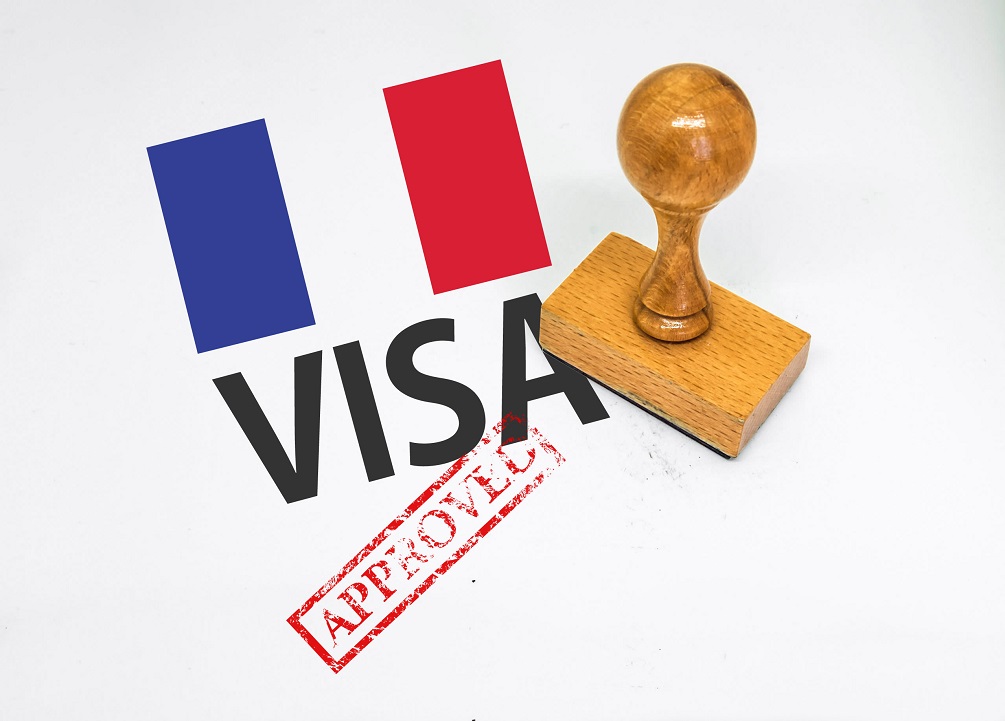


British citizens don’t need a visa to travel to France and other Schengen countries. You can stay for up to 90 days in any 180-day period.
If you’re traveling to other Schengen countries, ensure you plan your entire stay for less than 90 days.
Should you want to stay longer in France, you’ll need to meet the French government’s entry requirements.
You may need to show proof of accommodation, travel insurance, and a return or onward ticket at French border control. You may also have to prove that you have sufficient funds for the duration of your stay.
Your passport should be valid for at least three months after the day you intend to leave France. And it should not be older than ten years.
Ensure your passport is stamped when entering or exiting any Schengen area. This will help you avoid any inconveniences when border control agents check to see that you’re complying with the 90-day visa-free limit.



The plugs and sockets used in France are type E (circular with two adjacent round pins).
Sockets supply a standard voltage of 230 V and a standard frequency of 50 Hz.
It’s best to bring along a voltage convertor for appliances and devices with a different voltage. Also, a universal adapter with surge protection.



One of the biggest (and oldest) countries in Western Europe, France is one destination you must visit at least once in your lifetime.
World-class architecture and art exemplify the great heritage of the French people.
While these are the main reasons people visit France, the country is also popular for its charming cities, fashion houses, fine cuisine, and esteemed wines.
Metropolitan France (or France in Europe) extends from the Mediterranean Sea in the south to the English Channel and the North Sea.
France’s scenery is as varied as its climate. It has a terrain unique to continental Europe, featuring low-lying plains, remains of old mountains, plateaus, and massifs.
Each region in the country is unique. From the Loire Valley and Brittany to Burgundy and the Alps, there’s always something new to experience.
Whether you have a romantic trip planned or are taking a much-needed break from the city with family or friends, you won’t run out of things to do in France.
You can stroll around the capital city, Paris, and bask in its iconic sites, sunbathe along the French Riviera, or taste some of the world’s best wines in Bordeaux.
A visit to the Louvre, the classical art museum housing renowned pieces of fine art, is an ideal excursion for any history enthusiast.
And if you want to explore France’s great outdoors, go hiking, climbing, cycling, or kayaking.
France is in western Europe. It shares land borders with Spain and Andorra to the south and southwest, Belgium and Luxembourg to the northeast, Germany and Switzerland to the east, and Italy and Monaco to the southeast.
It’s also bounded by the Mediterranean Sea in the southeast, the Bay of Biscay in the west, the English Channel (La Manche) in the northwest, the North Sea to the north, and the Atlantic Ocean to the west.
France has territories in the Americas, the Indian, Pacific, and Atlantic Oceans. This includes Saint Pierre and Miquelon in the North Atlantic, French Guiana in South America, and the French West Indies.
Through French Guiana, it borders Suriname and Brazil in the Americas, and the Netherlands via the French part of Saint Martin.
Metropolitan France, the part of the country in Europe, is twice the size of the UK. It includes the coastal island of Corsica in the Mediterranean.
Monaco is an independent enclave on the southern coast of France.
France has a diverse terrain comprising the Massif Central in the south central, mountain ranges of the Alps in the southeast, the Pyrenees in the southwest, and coastal plains in the north and west.
It also has over 2000 miles of beaches and seashores.
The landscape is dominated by a group of ancient mountains, which, when viewed from above, form a V-shape.
Mount Neige is the greatest peak in France at 1,718 m (5,636 ft). Another notable peak is Mont Blanc at 4,810.45 m (15,782 ft) above sea level, which is in the French Alps along the country’s shared border with Italy.
An extensive river system runs through France. The most notable and major rivers are the Seine in the north, the Loire in the southern Massif Central, the Garonne in the southwest and the Rhône in the southeast. The Seine River flows north-westerly past the Île Saint-Louis in Paris.
Excluding northeast France, where Paris is located, geographic features and natural boundaries dominate most of the land borders. This includes the Rhine River in the east and the Pyrenees, the Als, and the Jura in the south and southeast.
The narrow Strait of Dover (Pas de Calais) lies between northern France and south-eastern England.



Considering France’s location, size, and geography, the country has varying climates.
Most of the country lies in a temperate region, while the southern fringes are in a subtropical area.
The surrounding bodies of water moderate the weather in France, namely the Mediterranean Sea on the south and the North Atlantic Drift on the west.
The three major climatic zones present in the country are Mediterranean, oceanic, and continental. This makes France slightly warmer than the UK and cooler than Spain.
The cities of Marseille and Montpellier in southern France along the Gulf of Lion have a Mediterranean climate. Winters are mild, precipitation is heavy, and summers are hot and dry.
In north-western France, along the Bay of Biscay and slightly inland, an oceanic climate prevails. This region is where you’ll find Paris, Bordeaux, Lille, and Bourges. There is moderate rainfall, low annual temperature variations, and extreme humidity.
In Paris, the average yearly temperature is 11 °C (53 °F).
A continental climate is present in the mountainous regions of Southern France and the northern half of the country. Winters are extremely cold and snowy, while summers are pleasantly warm and dry.
In Nice, the average annual temperature is 15 °C (59 °F), declining towards the north to 10 °C (50 °F) on the northern border in Lille.
Annual precipitation exceeds 1,270 mm (50 inches) at higher elevations in the west and northwest, the mountain ranges and in the Massif Central.
France has all four seasons, each lasting approximately three months.
Spring is the season of romance in France, and when flower festivals are popular. Running from March to June, the weather is typically warm and you can expect many days of sunshine.
If you plan to visit France in Spring go to Arcachon Bay to enjoy fresh oysters or the Marais Poitevin (or Green Venice) for unmatched nature immersion.
Summer is from June to August, and high temperatures mark the season. The average temperature during summer ranges between 16.1 °C (61 °F) and 23.9 °C (75 °F).
This is the peak season for tourism in France, so be prepared for crowds. Despite this, it’s the best time to catch festivals like the Sully and Le Loiret Music Festival in Loire Valley. It’s also the ideal time to visit Nice and Avignon for beach activities and sightseeing.
Autumn in France is pleasantly warm and rainy. The season runs from September to November.
It’s ideal for enjoying the wine harvest festivals all around the country. Also, you won’t regret a visit to Beaune and the renowned wine region, Bordeaux.
Winter in France starts in December and ends in February, with the average temperature ranging from 1.7 °C (35.1 °F) to 9.4 °C (48.9 °F).
In eastern France, it can get chilly and foggy. But near the Mediterranean Sea, temperatures are much milder.
Despite the frigged and rainy weather of France winters, it’s the best time to attend the Festival of Lights in Lyon and the Paris Carnival in Paris.
You might also enjoy exploring the open-air market in Cannes or visiting the Notre-Dame de Fourvière in Lyon.



If there’s one thing about French cuisine almost everyone knows, it’s one of the finest in the world. From beef bourguignon to crème brûlée, the French have a way with food that excites any pallet.
Traditional recipes vary from region to region, with each having its own specialty. These include bouillabaisse (seafood soup) from Marseille, choucroute (sauerkraut with sausage and other salted meats) from Alsace, and magret de canard (slices of duck breast) from Bordeaux.
Some other French hors d’œuvres and main dishes include foie gras (duck or goose liver), pot au feu (beef stew), and lobster bisque.
French desserts are just as elegant as other popular dishes, comprising mousse au chocolat, macarons, and mille-feuille.
The French produce a wide range of cheeses (over 300 varieties!), including Brie in Île-de-France and Reblochon in Savoy.
Apart from the country being renowned for cheese, France is also popular for being one of the world’s best wine producers.
They range from light, fruity sparkling varieties, and Mediterranean reds to less renowned blends like ‘yellow wine’ (vin jaune).
The regions of Burgundy, Bordeaux, and the Rhône valley are home to some of the world’s great vineyards.
Autumn is the best season to go wine tasting in France and take part in wine harvesting traditions.



What to wear in France depends on the season you’re going and the activities you’ll be doing.
In general, lightweight clothes are ideal, meaning leave those clunky jeans at home. It’s also best to have neutral-coloured clothes.
Although Paris has a reputation for stylish and fashionable wear, you can wear whatever is comfortable for you.
Go for casual garments, but remember to add a touch of class so you don’t appear underdressed or disordered. Avoid baseball caps, clunky sneakers or trainers, shorts, flip-flops, and sweatpants when in the cities.
For women, dresses and skirts are best, while for men, dark jeans, button-down shirts, and trousers.
If you’re packing for the seasons, summer dictates light, breathable garments, and a light jacket for chilly nights. It’s best to be prepared for warm and cold weather in Autumn, so pack leather clothing, sweaters, and long sleeve shirts.
As for winter, you should bring along a thick coat or jacket, warm trousers, scarves, and gloves. And since spring has unpredictable weather, light sweaters, tailored pants or dark jeans, and long-sleeve tops are ideal.
Packing light for a trip to France is the right way to go. The last thing you want is to be lugging around a heavy suitcase (or three) of clothes you won’t wear.
You should create a capsule suitcase with garments you can mix and match. This way you will have a light suitcase and several options for outfits.



The euro (EUR) is France’s national currency, one unit of which is divided into 100 cents.
Banknotes in circulation are available in denominations of €5, €10, €20, €50, €100, €200, and €500. However, the €200 and €500 notes are rare and are not typically accepted for small purchases.
The euro coins in circulation are 1 and 2 euros, and 1, 2, 5, 10, 20, and 50 cents.
Most of the banks in France aren’t have an option to exchange money for non-account holders.
You can swap your foreign currency for euros at any exchange bureau. But be wary about the rate you’re offered and any commissions you’ll be charged.
Most hotels and stores in France accept credit and debit cards. The most widely accepted are Visa and MasterCard. But you may be able to use other types of cards, including Cirrus and Maestro.
You will find ATMs almost everywhere in France outside all banks, in shopping malls and centres and at train stations and airports.
You may be charged a withdrawal fee when using one of the ATMs in France. Therefore, make sure you know how much this fee will be so you can plan accordingly. If you have more than one card, find out which one has the lowest withdrawal fee and offers the best exchange rate, then use that one for your trip.
Traveller’s cheques, although rarely accepted in some countries, can be cashed in France at any bank or urban post office. You can also use them in some hotels, but outside major tourist areas, they will not be accepted.
If you plan to come with traveller’s cheques to France, ensure they’re in euros and not your home currency. This will ensure you lock in the face value and not lose money when exchanging currencies.



The official and national language of France is French, a romance language derived from Latin. Millions of people worldwide also speak French, either as a mother tongue or a second language.
In Brittany and Alsace, there are regional languages spoken, such as Breton and Alsatian, which is a German dialect. Occitanian French is spoken in the south of France, Monaco, and some parts of Italy.
Other languages spoken in the country include Arabic, Italian, Portuguese, and Spanish. English is not widely spoken in France, save for tourist areas and restaurants and hotels in Paris.
Knowing basic French words and sayings can go a long way to make navigating France easier. Here are some beginner-friendly French terms and phrases you should know for your trip, along with their pronunciations:
- Hello – Bonjour (bon-zhour)
- Goodbye – Au revoir (oh-reu-vwar)
- Thank you – Merci (mair-see)
- Please – S’il vous plaît (see-voo-play)
- I want – Je veux (zheu veu)
- How much is it? – Combien ça coûte? (kom-bjanne sar coot)
- The price – Le prix (pree)
- Credit card – Carte de crédit (kart deu cray-dee)
- I don’t understand – Je ne comprends pas (zheu neu kompron par)
- I don’t speak French – Je ne parle pas français (zheu neu parl par fron-say)



French culture is both universal and particular. It has had a significant influence on European culture and the development of art and science globally.
France has a rich cultural history rooted in fine art, gothic architecture, poetry, and literature.
Some of the world’s most visited museums and architectural gems are found in France. For instance, the Louvre Museum houses fine art such as the Mona Lisa.
Several revered artists like Vincent Van Gogh and Pablo Picasso frequented and lived in Paris.
Fashion is also integral to French culture. Paris is one of the world’s fashion capitals; the fashion houses of Dior, Chanel, and Givenchy are based in Paris.
France is a secular country, meaning there isn’t an official religion. Most French people are Catholic, with 2% Protestant. A small percentage of the population is Muslim.



British citizens don’t need a visa to travel to France and other Schengen countries. You can stay for up to 90 days in any 180-day period.
If you’re traveling to other Schengen countries, ensure you plan your entire stay for less than 90 days.
Should you want to stay longer in France, you’ll need to meet the French government’s entry requirements.
You may need to show proof of accommodation, travel insurance, and a return or onward ticket at French border control. You may also have to prove that you have sufficient funds for the duration of your stay.
Your passport should be valid for at least three months after the day you intend to leave France. And it should not be older than ten years.
Ensure your passport is stamped when entering or exiting any Schengen area. This will help you avoid any inconveniences when border control agents check to see that you’re complying with the 90-day visa-free limit.



The plugs and sockets used in France are type E (circular with two adjacent round pins).
Sockets supply a standard voltage of 230 V and a standard frequency of 50 Hz.
It’s best to bring along a voltage convertor for appliances and devices with a different voltage. Also, a universal adapter with surge protection.
Travel related news, information and inspirational articles and videos for travellers booking flights or holidays to France. Ask questions about travel in France and get answers from France experts
NEWS
Inspiration, Information and Travel Guides
MEET THE France EXPERTS
If you are looking to book a holiday to France or needs some help and advice planning travel to France then contact one of the UK based independent travel agents that specialise in France itineraries.
FEATURED VIDEOS
Your Travel Questions Answered
Ask any travel related question and get an answer from one of our experts that will provide you with an answer from their personal experience
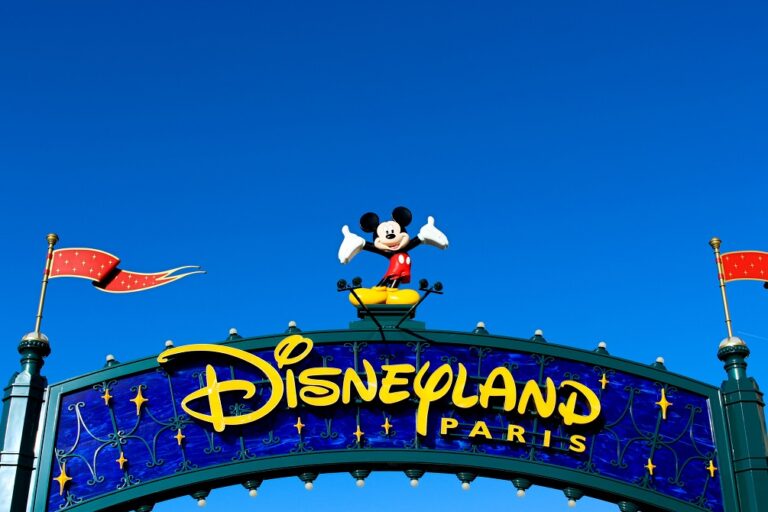

My family loves Disneyland Paris! Is there anywhere else in Europe that is similar? It would be great to try somewhere new and mix things up a bit!


EVENTS IN THE France
26th May 2022
min. read






























